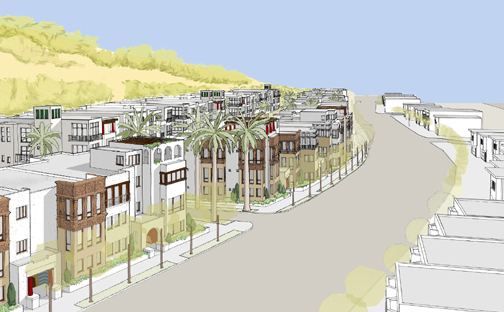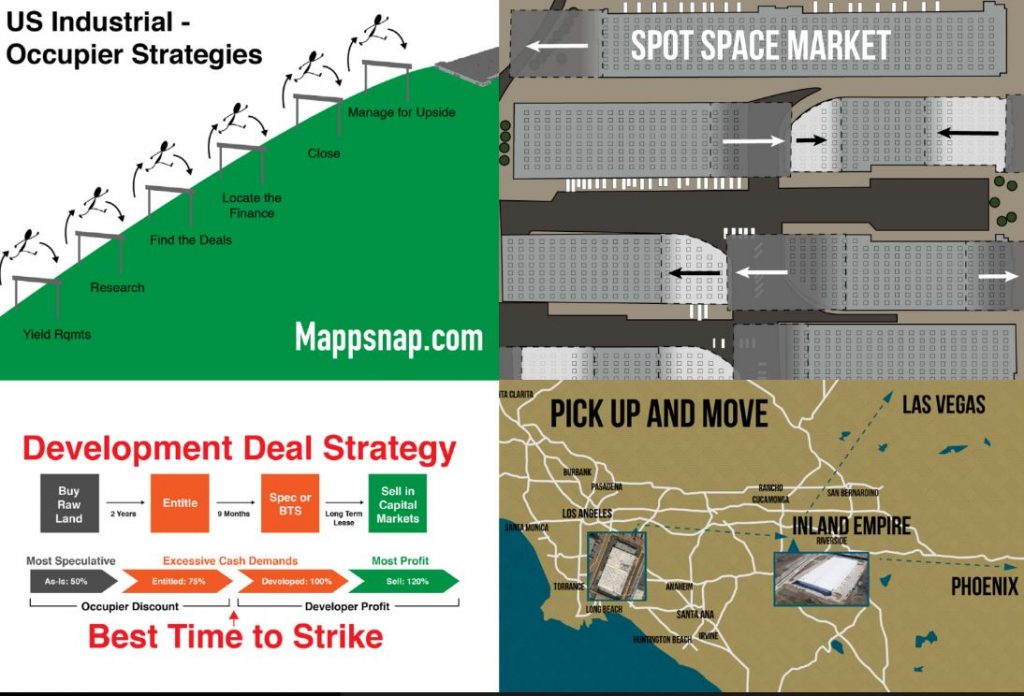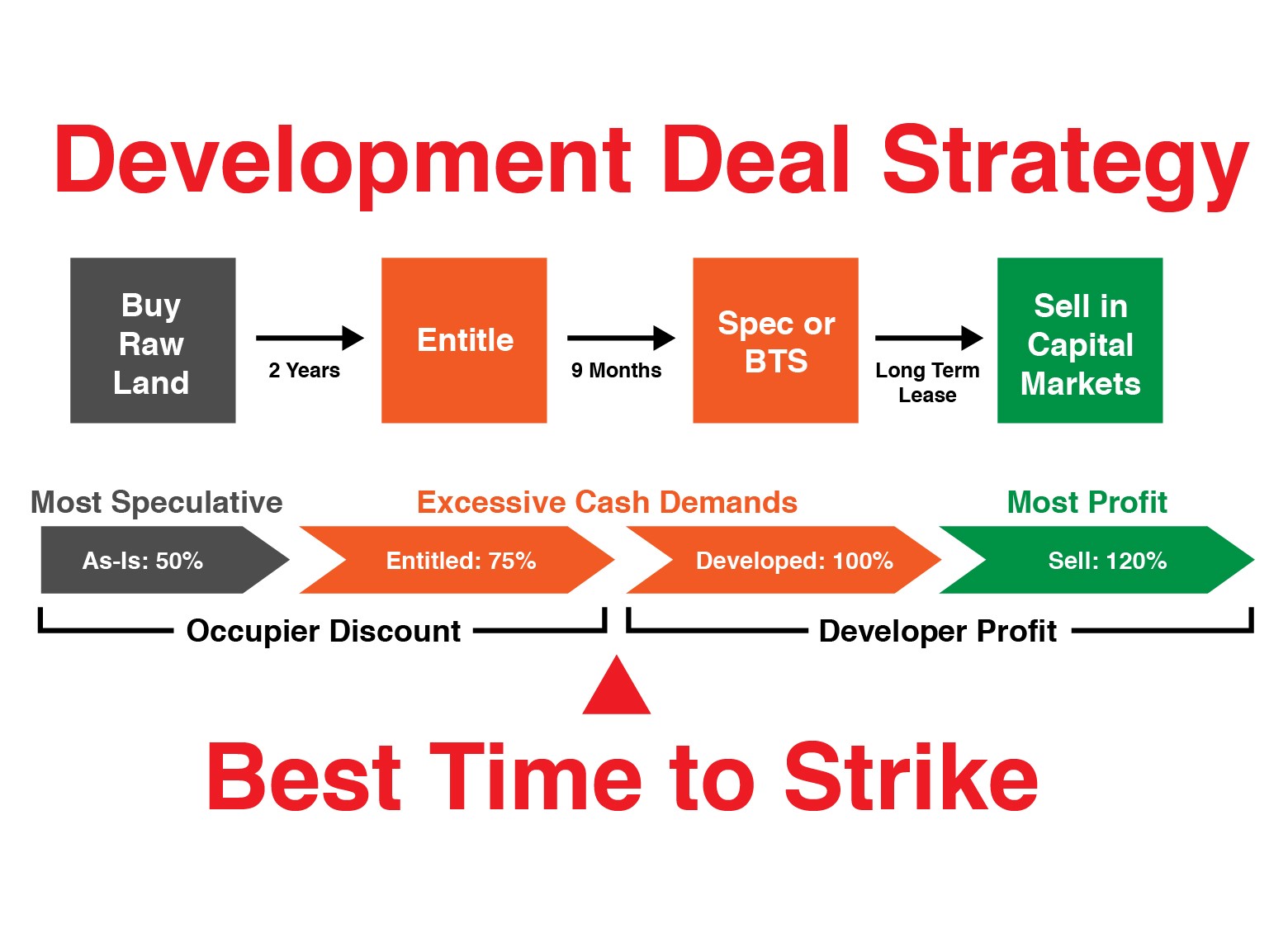


Four Current Forces of the Industrial Real Estate Business
The current robustness in industrial real estate markets obscures many forces that can balance and protect your investment and location decisions. Technology, Monetary Policy, Political Risk, and Space Transparency are important factors that provide support during good times and bad.
Continue reading “Four Current Forces of the Industrial Real Estate Business”

European Opportunities for U.S Occupiers and Investors
I just returned from the SIOR European Conference in Warsaw, Poland. It’s my third visit to Europe recently and the most persistent trend is the expansion of big warehouse development. It’s leading to opportunities for U.S. occupiers and investors mainly due to the strength of the dollar.
Continue reading “European Opportunities for U.S Occupiers and Investors”

Digital Transformation Of The Industrial Broker
Here is the reading/resource list for the session in Austin entitled, Digital Transformation Of The Industrial Broker
reading list

Race for Space – The New Dynamism
Dynamic pricing is becoming a greater influence on space leasing and building sales. By dynamism, I mean fluctuating rents separate from conventional underwriting. A “spot market” is emerging to satisfy demand for smaller, flexible, and elastic spaces. Many examples include Truck Yards, Warehouse Sharing, Creative, Cannabis, and other categories of sub-space where “street rents” are disconnected from contract rents. WeWork and Amazon are two primary examples that contract with the Landlord at one rent, and lease out space bits at higher rents. Public Warehouses, Self-Storage, Swap Meets, Studios and Truck Yards operate along the same model by collecting additional rent by offering “alternative occupancies” with varying degrees of added services. The revolution is any building can be pieced out especially with easily acquired technology that can create “smart” buildings for automation, surveillance, and access.
Continue reading “Race for Space – The New Dynamism”

Winter News 2016 – Industrial Real Estate Profits
The current cycle is being propelled by three major conditions: Space Scarcity, Capital Markets Pressure and Rent Surge. Market dynamics are still very favorable for development and will only be disrupted if demand begins to weaken. Otherwise, strong fundamentals are the prevalent condition in most major U.S. markets.
Continue reading “Winter News 2016 – Industrial Real Estate Profits”

Notes From the 2015 SIOR Fall Conference in Chicago
Here are a few notes from the SIOR Fall Convention 2015 that was held in Chicago this past weekend, October 8-10.
Continue reading “Notes From the 2015 SIOR Fall Conference in Chicago”

Looking at US Industrial with the US Cluster Mapping Project
The Cluster Mapping Project (CMP) was pioneered by Michael E Porter of Harvard University. He is just as well known for his works on Competitive Advantage. His work is a necessary foundation for US Industry and business organizations. I reprint his Value Chain diagram below for company diagnostics, which has been repurposed to examine the competitiveness of regions. To understand the implications of location and clustering, you can read an article Professor Porter published in 1995 about the strategic location of inner cities which is just as relevant today.

Continue reading “Looking at US Industrial with the US Cluster Mapping Project”

Real Estate Deals in the GIS and Data Universe
Good technology can improve real estate deal making. This article describes my experience with Geographical Information Systems (GIS) and how it has become a fundamental tool for my business. At its simplest, GIS programs are a visual adjunct to database and contact management programs. However, if used to its fullest, GIS can crystalize multiple property relationships to monetize real estate information by traditional forms of deal making, solve complicated problems and create new business models.
Continue reading “Real Estate Deals in the GIS and Data Universe”

Questions About The End of California Redevelopment

We are starting an extremely interesting and confusing period as redevelopment agencies (RDAs) come to an end. Firstly, RDAs were a powerful force in every city’s arsenal. They employed large staffs and had enormous budgets. A lot of the built commercial world is attributable to redevelopment through direct land contribution, infrastructure, subsidies, guarantees, loans or other physical or financial contributions. RDAs created a lot of very good development that would not have otherwise been built. High quality, low income housing units were developed. Many private and capable developers profited.
Continue reading “Questions About The End of California Redevelopment”







.jpg)